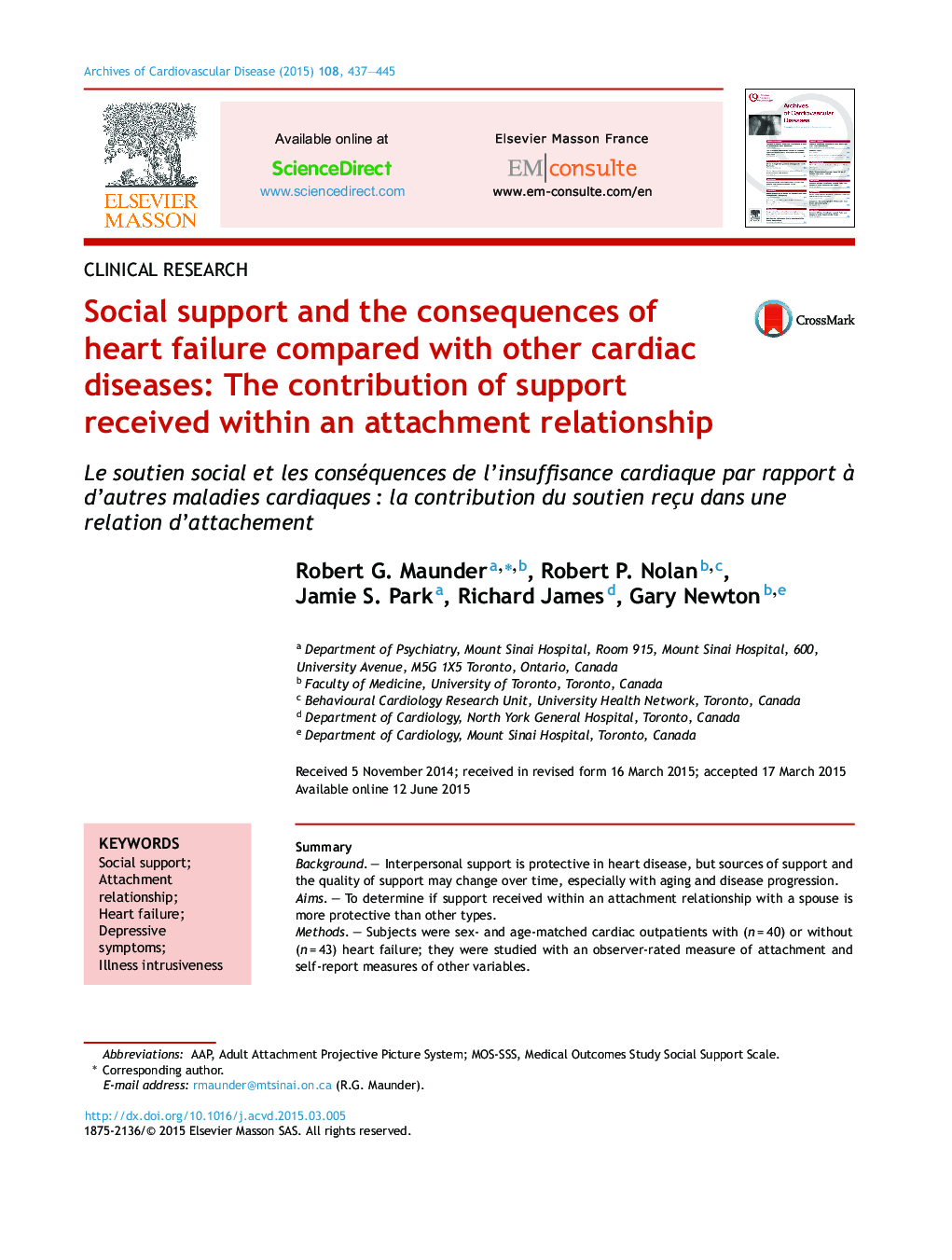| Article ID | Journal | Published Year | Pages | File Type |
|---|---|---|---|---|
| 2888744 | Archives of Cardiovascular Diseases | 2015 | 9 Pages |
SummaryBackgroundInterpersonal support is protective in heart disease, but sources of support and the quality of support may change over time, especially with aging and disease progression.AimsTo determine if support received within an attachment relationship with a spouse is more protective than other types.MethodsSubjects were sex- and age-matched cardiac outpatients with (n = 40) or without (n = 43) heart failure; they were studied with an observer-rated measure of attachment and self-report measures of other variables.ResultsHaving heart failure was associated with more depressive symptoms and illness intrusiveness. Although perceived social support did not differ in people with or without heart failure, those with heart failure had a spouse as the primary source of attachment functions less frequently than those without heart failure (50% vs 79%; P = 0.006). Not having a spouse as the main provider of attachment functions was a partial mediator of the relationship between disease type (heart failure or no heart failure) and depressive symptoms (β = –0.24, t = –2.2; P = 0.03) and deficits in non-attachment support made a further independent contribution (β = –0.24, t = –2.4; P = 0.02). Neither perceived social support nor having a spouse serving attachment needs made a significant contribution to illness intrusiveness.ConclusionHaving someone other than a spouse to provide attachment support is more common in cardiac patients who have heart failure and is associated with an increased risk of depressive symptoms.
RésuméContexteLe soutien interpersonnel est un facteur de protection dans les maladies cardiaques. Néanmoins, les sources et la qualité du soutien peuvent changer progressivement, particulièrement avec le vieillissement et la progression de la maladie.ObjectifDéterminer si le soutien d’un conjoint représente un facteur de protection plus élevé que le soutien d’un non-conjoint.MéthodesLes patients cardiaques non hospitalisés furent choisis selon leur sexe et leur âge, ainsi que l’existence (n = 40) ou l’absence (n = 43) d’insuffisance cardiaque. L’attachement fut évalué par des observateurs indépendants. Les autres variables furent obtenues via auto-évaluation.RésultatsLa présence d’insuffisance cardiaque était associée à plus de symptômes dépressifs et à une augmentation du caractère intrusif de la maladie. Le soutien social perçu n’a fait aucune distinction vis-à-vis l’insuffisance cardiaque, cependant ceux souffrant d’insuffisance cardiaque avaient moins souvent un conjoint comme la principale source de fonctions d’attachement (50 %) que ceux sans insuffisance cardiaque (79 % ; p = 0,006). L’absence d’un conjoint à titre de principal fournisseur de fonctions d’attachement était un facteur médiateur partiel entre le type de maladie (présence ou absence d’insuffisance cardiaque) et les symptômes dépressifs (β = –0,24, t = –2,2 ; p = 0,03). Le manquement au soutient non attachement apportait aussi une contribution indépendante (β = –0,24, t = –2,4 ; p = 0,02). Ni le soutien social perçu, ni la présence d’un conjoint répondant aux besoins d’attachement n’apportaient une contribution significative au caractère intrusif de la maladie.ConclusionLes patients cardiaques ayant une personne autre qu’un conjoint leur fournissant du soutient d’attachement ont plus souvent une insuffisance cardiaque et ont un risque plus accru de symptômes dépressifs.
